
EUROPE
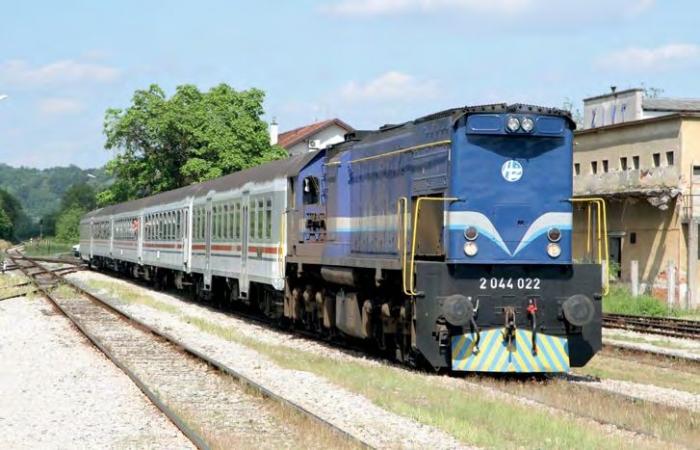
STORM DAMAGE HITS RAIL NETWORKS
Severe storms caused chaos for rail operations in northern Europe during 17 January. Storm Fionn (so named by the Irish Met Office) hit the UK overnight on 16/17 January, leaving several lines closed, especially in East Anglia, often due to fallen trees. In the Netherlands, almost the entire rail network was shut for most of the day, with parts closed for several more days. National infrastructure manager Prorail reported 344 individual storm-related incidents, including overhead line damage in 20 places and 97 trees on tracks.
In neighbouring Germany, where the storm was named Friederike, long-distance operator DB Fernverkehr stopped all operations at around 16.00, with trains mid-journey left in stations full of passengers overnight. Regional rail services in the north of Germany were also largely suspended, although some regional trains ran in the south.
DB PLANS CROSS-BORDER ETCS
German national operator DB has announced it will equip 1,200 freight locos with European Train Control System (ETCS) equipment by 2026, with the EU part-funding the cost of the work to facilitate cross-border operation. DB has avoided extensive investment of freight locos with ETCS over the last decade, on the grounds of both cost and complexity. It has a large fleet of locos in Germany and elsewhere, and in many cases the routes operated are not ETCS-equipped, nor likely to be in the near future.
DB’s approach is changing in part because more of the network in Germany is being ETCS-equipped (such as the new Leipzig-Erfurt-Nuremberg high-speed route, which has been built in the expectation of extensive freight use). In addition, neighbouring countries such as the Netherlands, Switzerland and Austria have adopted the system for key freight corridors (the new St Polten freight bypass, west of Vienna, which opened in December 2017, is not equipped with lineside signals, meaning only ETCS-equipped locos can use it).
The plan DB has announced includes locos already equipped with ETCS for specific routes (such as Class 185 Traxx AC locos used on the Gotthard route in Switzerland and Class 6400 diesel locos used by DB in the Netherlands). In addition, 65 Class 186 Traxx MS locos used for services into and within France will be equipped with ETCS between 2018 and 2022, and new locos on order (for example the 60 Class 193 Vectron MS locos now being delivered to DB Cargo by Siemens) will be built fitted with ETCS.
CROATIA
ELECTRIFICATION FOR ZAGREB SUBURBAN SERVICES
Croatian infrastructure manager HŽ Infrastruktura has received €80.8 million of EU funding to enable the electrification (at 25kV AC) and modernisation of the 24.2km Zaprešić to Zabok line northwest of Zagreb. The EU funding is expected to cover 85% of the project cost, and initial tenders attracted six civil engineering firms or consortia from across Europe and a Chinese bidder. The work will include elimination of all level crossings and some new alignment to improve speeds and electrification.
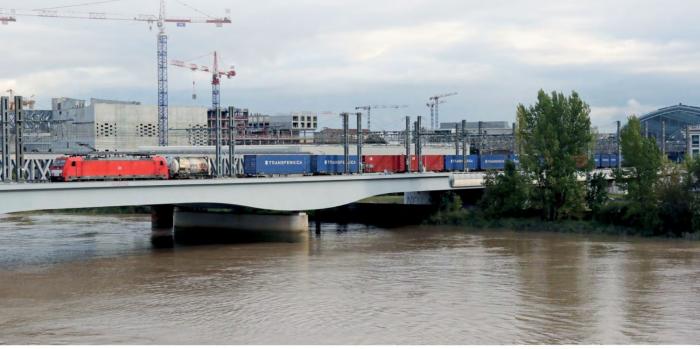
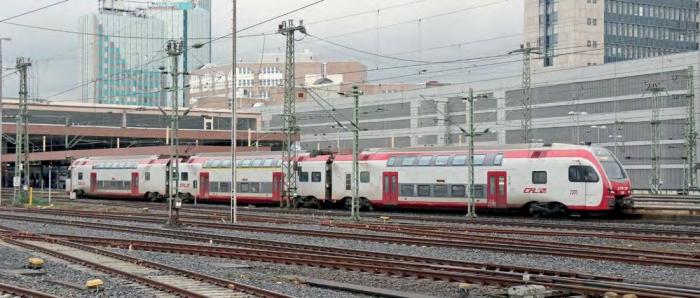
Once the line, which branches from the main Zagreb to Ljubljana international line at Zaprešić, is rebuilt in 2021, more frequent electric trains formed of modern EMUs will replace a mixture of DMUs and some diesel loco-hauled services.
REGIONAL LINE REOPENS
HŽ Infrastruktura reopened the Pčelić to Banova Jaruga line on 5 February after a four-year closure due to poor quality infrastructure.
The 95.9km line in central Croatia has been refurbished at a cost of around 70 million Kuna (€10 million). National rail operator HŽPP has reintroduced services operated using DMUs.
DENMARK
DIESEL LOCO FLEET GROUNDED
Danish operator DSB withdrew all 33 Class ME diesel locos from service on 27 January following the discovery of cracks in the axles of some locos. The 2,460kW Co-Co locos, dating from 1981-85, are used to operate many regional passenger services to the south and west of Copenhagen, operating with 25 sets of double-deck coaches.
DSB announced a programme to examine all 198 axles in use on the fleet – a process that will involve all the loco bogies being disassembled, and forecast in late January as likely to take until late March. In the intervening period an emergency timetable was introduced with, where possible, DMUs being used in place of the ME loco plus double-deck sets. Whilst DSB has a small number of electric locos (Class EA dating from 1984-93), it has nowhere near enough to replace the ME diesel locos, although long-term some of them are likely to be replaced by new electric locos operating with the existing double-deck coaches. In late 2016, DSB shortlisted Bombardier, Siemens and Škoda as potential suppliers of 26 new electric locos – with the aim of having the first in service by 2019; this is now very unlikely as over a year later no order has been placed.
NEW EMUs IN MID 2020s
In late January the Danish parliament, on a cross-party basis, agreed the purchase of up to 150 new EMUs by DSB. These 200km/h trains will replace the older IC3 DMUs and newer but unreliable Ansaldo-Breda IC4 trains from 2023. DSB will start procurement this year with the aim of awarding a contract in 2019 or early 2020. Given the problems DSB had with its IC2/IC4 trains, the Danish parliament has insisted on independent scrutiny of the proposed order before it is placed, and on purchase of a proven product from a manufacturer which will remain fully responsible for maintenance and train availability.
LUXEMBOURG
INTER-CITY SERVICE TO GERMANY RESTARTS
Luxembourg national operator CFL started operating direct ‘inter-city’ services between Luxembourg and Dusseldorf in Germany from 10 December 2017. The service, which also serves Koblenz, Bonn and Koln, currently comprises one train pair a day and is operated by one of the CFL fleet of Stadler KISS double-deck EMUs. The services are being operated in co-operation with DB long-distance subsidiary DB Fernverkehr, rather than as an open access competitive service, and are branded as inter-city for promotional purposes. In reality, the KISS EMU operates as a regional service between Luxembourg and Koblenz, where CFL operates the regional express semi-fast service under contract to the German state of Rheinland-Pfalz.
DB Fernverkehr and CFL formerly operated inter-city services between Luxembourg and a range of north German destinations: these were withdrawn in December 2014. DB has previously announced plans to reinstate them – from 2030 onwards!
FRANCE
NEW MIXED USE HIGH-SPEED LINE OPENS
The new 60km-long Contournement Nimes-Montpellier (Nimes-Montpellier bypass) opened to freight services in December 2017. From 7 July some passenger trains will use it as well. Initially passenger services are restricted to 220km/h, although the line is designed for 300km/h operation once European Train Control System (ETCS) Level 2 is in use. Currently signalling is ETCS Level 1 with standard French KVB+BAL beacon (Balise) plus automatic block signalling.
The line is designed to partly bridge the gap between the southern end of the LGV Mediterranee (south from Lyon) and the northern end of the Perpignan to Figueres high-speed line. The new line will have two new out-of-town stations to serve Nimes and Montpellier: the Montpellier-Sudde France station is due to open in July but the Nimes-Manduel station is currently under construction with opening not forecast before 2019. Connections to other lines have been (or will be) built, totalling a further 20km. The new line is expected to reduce Paris to Montpelier/ Barcelona journey times by around 20 minutes.
The line has been funded by a public-private partnership, with a consortium Oc’Via – including civil engineering contractor Bouygues, Colas Rail and Alstom – being awarded a 25-year concession, which began along with construction in 2012. The consortium, which also includes banks and other financial investors, has contributed €1.5 billion towards the estimated €2.3 billion cost of the project; the balance came from French regional and national governments plus EU funding.
GERMANY
STUTTGART 21 PROJECT LATE AND OVER BUDGET
In late 2017 press reports in Germany suggested that the controversial Stuttgart 21 project to replace the existing Stuttgart Hauptbahnhof terminus with an underground through station was running several years late and over budget. DB as main sponsor for the project is now embroiled in legal disputes with its partners (such as the city of Stuttgart, Stuttgart Airport and the state of Baden-Wurttemberg) as to who is liable for the additional costs: the original €6.5 billion project is now expected to cost at least €7.9 billion. The legal proceedings seem likely to last as long as the construction project, as all its partners believe DB alone is liable for the cost overruns, which DB attributes to inflation in construction costs due the buoyant German economy.
The project – as the name suggests – was originally planned for completion by 2021, but this has now been put back to 2024, meaning redevelopment of the existing terminus station site, which was one of the main catalysts for the project in the first place, will also be delayed by at least three years.
The project includes a complex network of new railway tunnels under the city enabling trains to access the new Wendlingen to Ulm high-speed line which is under construction to the east of Stuttgart; the new route will also enable long-distance trains to serve Stuttgart airport, currently served only by an S-Bahn suburban service.
HAMBURG ALTONA TO MOVE
In early January DB announced it had gained outline approval for its plan to close the existing Hamburg Altona terminus station in the west of the city, replacing it with a new through station 1km north of the current site – but also to be called Hamburg Altona. The new station will be built on the site of the existing two-track S-Bahn station Hamburg-Diebsteich, and is due to open in December 2023.
The new station is planned to have four island platforms with six long-distance tracks and two S-Bahn tracks. It will also feature office accommodation in two new tower blocks. An architectural competition is to be held to finalise the actual design for the station and other buildings, enabling local planning permission to be sought.
The Altona terminus is the start point for almost all southbound long-distance services originating in Hamburg. It is also served by regional trains to Itzehoe and Westerland (Sylt). Currently empty ICE and other long-distance trains have to reverse at Altona, after leaving the stabling and preparation depot just north of the planned new station site, before heading south via the city centre (and Hamburg Hauptbahnhof). The new station will involve construction or replacement of around 25km of new track along with 48 switches, all controlled by brand new signalling.
The project – like the long-running and controversial Stuttgart 21 scheme – is driven by the desire to reuse prime city land currently used for railway operations. The existing Altona site will be cleared of all railway infrastructure, removing track, station and the remaining maintenance facilities, although DB estimates only 60% of the land area is currently in use, with extensive areas of waste ground. The site and surrounding area has already been sold by DB to the Hamburg city government (in June 2015 for €38.8 million), and the city authorities plan to build 1,900 new apartments on the site, which will retain the current underground ‘Altona’ S-Bahn station.
The new station as planned clearly offers operational advantages, removing the need to reverse empty long-distance trains, although it will offer a worse service for those people living within a short distance of the current station and will offer fewer ‘one journey’ connections by S-Bahn. Unfortunately there is no plan currently under discussion to increase capacity between Altona and the Hauptbahnhof, or at the Hauptbahnhof itself, which is frequently operating at capacity in terms of both trains and people. As a result trains from much of Schleswig-Holstein will continue to terminate at the new Altona and change direction there – rather negating the point of building a through station! Local opponents of the scheme, which they say will cost €360 million, have started a campaign to try to retain the existing terminus station: so far at least the scale and scope of the opposition has not reached that seen in Stuttgart over the Stuttgart 21 project.
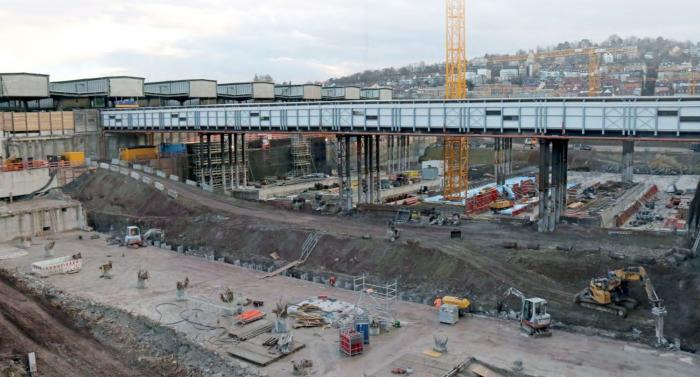
IRELAND
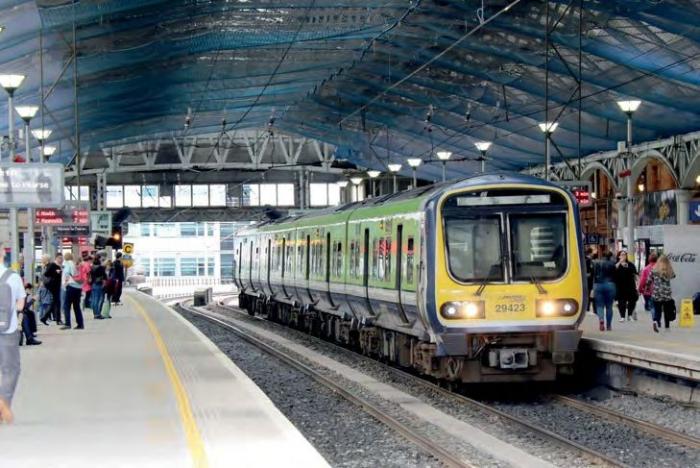
NEW ROOF FOR DUBLIN PEARSE
The National Transport Authority is to fund the design and construction of a new roof for Dublin Pearse station, with renewal work due to commence in the second half of 2018. The current roof structure was designed by Richard Turner of Turner’s Iron Works, Ballsbridge, Dublin and erected in 1889 at what was then Westland Row station (it was renamed Dublin Pearse in 1966 after the Pearse brothers, both of whom were executed after the 1916 Easter Rising). Dublin Pearse is one of the busiest stations in Ireland, with substantial commuter traffic.
Turner’s had previously designed the similar Liverpool Lime Street station roof in 1849. The roof at Pearse is now in a poor condition due to corrosion, and protective mesh netting has been in place below roof level in recent years to protect station users and trains from falling debris.
Replacement of the structure was identified by Iarnrod Eireann as a vital safety project. Although the current very distinctive roof is not a listed structure, the ‘design and build’ tender for the replacement roof is specified to be of a similar external appearance and character. Physical work to replace the roof is expected to take place over a two-year period, with Pearse station closed for 13 weekends commencing August 2018. Cranes will be used to lift out old and lift in new sections of roof during these weekend closures; train services will be modified – north side DART, Maynooth and Drogheda services will operate to/from Connolly station, with south side DART and Rosslare services operating to/from Grand Canal Dock. Tim Casterton
SPAIN
GAS-POWERED PASSENGER TRAIN LAUNCHED
Spanish operator RENFE launched the first liquefied natural gas (LNG) powered passenger train in Europe on 8 January on the metre-gauge (former FEVE) network in Asturias. The converted ex-FEVE Class 2600 metre-gauge DMU has an LNG engine fitted in place of a diesel. LNG, as a liquid, is denser than pressurised gas, enabling more energy to be carried in a similar sized fuel tank to that used for diesel – although it is also heavier. The Spanish trial is a joint venture between RENFE and two gas suppliers, Gas Natural Fenosa and national gas grid operator Enagas, and is being implemented as part of Spain’s 2014-20 strategy for developing vehicles with alternative energy sources.
The train is being tested in service on the Baina-Figaredo line south of Oviedo. Performance will be closely monitored to determine how effective LNG operation is compared to diesel.
LNG has been used as a fuel source for heavy freight locomotives: in North America Class 1 railroads BNSF and Canadian National have both equipped locos for LNG operation, whilst in Russia national operator RZD has developed a range of gas-powered locos in co-operation with Russian industry and gas company Gazprom. RZD has announced plans to buy 39 very large 12-axle 8,277kW LNG-fuelled locos, based on a prototype that has hauled 12,000-tonne freight trains in trials. RZD also has smaller type TEM19 locos in service using compressed natural gas.
SWITZERLAND
BLS ORDERS NEW EMU FLEET
Swiss operator BLS in mid-January placed an order for 52 new Flirt EMUs to be built by Stadler, in two batches. 24 are for regional services on the Bern-Spiez-Zweisimmen / Bern-Burgdorf-Thun and Brig-Domodossola regional express routes, and 28 are for Bern area S-Bahn services, enabling service frequencies to be increased to 15-minute headways.
All the trains will be six cars long and are to enter service between 2021 and 2025, although prototype units are due to be delivered in mid-2019. The Regional Express trains will feature different seating arrangements to the S-Bahn trains and provision for catering. BLS will use the new trains to replace its older EMU and push-pull loco-operated trains.
UKRAINE
BETTER CONNECTIONS BETWEEN UKRAINE AND POLAND
In July 2017 visa restrictions for Ukrainian citizens entering the EU were removed and as a result Ukrainian Railways (UZ) has begun more daytime operation into the south eastern Polish border city of Przemyśl. It uses the modern Hyundai Rotem inter-city EMUs originally delivered for the UEFA Euro 2012 soccer tournament, co-hosted by Ukraine and Poland.
The initial service of one train pair between Kyiv and Przemyśl, via Lviv, which started in July 2017, was rapidly expanded to two train pairs, both EMU-operated. In addition, since December, a loco-hauled Odessa to Przemyśl overnight service has begun operation.
